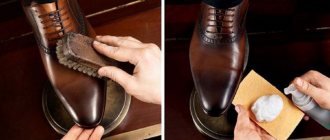Failure to follow the simplest rules for operating a thermos inevitably leads to the appearance of unpleasant odors - mustiness, spoiled food, strong-smelling drinks and mold. Sometimes even a fungus is found inside. With such a set of aromas, further use of the thermos becomes impossible.
It happens that immediately after purchase you have to look for ways to get rid of the smell in a thermos - an unbearably sour aroma emanates from the flask or rubber stopper.
There are two main types of thermoses - metal (stainless steel) and with a glass flask inside. For both types, you can choose cleaning products and methods.
Reasons for appearance
A musty, stale aroma appears in a thermos for the following reasons:
- untimely and poor-quality cleaning of the product from food and drink residues;
- stagnation of air inside the flask due to the constantly plugged neck;
- the habit of completely collecting a product that is not completely dry;
- rotting leftover food that was forgotten to be removed from the thermos in a timely manner.
Housewives often complain that even thoroughly washed items smell unpleasantly like plastic. In this case, the root cause may be poor quality materials from which the item is made.
The most effective recipes
To prepare homemade cleaning products, single components or their various combinations are used.
How to properly clean the oven at home with simple vinegar
This option is suitable for removing simple fresh stains and eliminating the unpleasant odor that remains after burning food. To clean the oven, wipe its inner surface with a sponge soaked in vinegar and leave for 2-3 hours. After this time, the vinegar along with the split fat is removed using a soft, wet sponge.
Vinegar + soda
A mixture of table vinegar and soda works well for old stains.
First, the walls and bottom of the oven are treated with vinegar, and then soda is applied to them using a moistened sponge. Leave the oven in this form for 1-3 hours (depending on the degree of contamination). You can first apply a slurry of soda, and then generously sprinkle it with vinegar solution (it is very convenient in this case to use a spray bottle).
As a result of a chemical reaction with the formation of carbon dioxide, the fatty deposit becomes soft and loose. In this form it is easy to remove from any surface. After 2-3 hours, wash off the remaining cleaning agent and grease, wipe the oven with a soft cloth soaked in clean water.
Vinegar + steam
This method also gives good results and helps fight both fresh stains and dried deposits on the walls of the oven.
- Before processing, you need to preheat the oven to 150-200°C.
- Without turning off the heat, place a deep baking tray with a vinegar solution inside, to prepare which add 4 tbsp to 1 liter of water. spoons of table vinegar.
- The pan is left in the oven until the liquid boils.
- When the solution boils, turn off the equipment and allow the water to gradually cool for half an hour. Then remove the baking sheet and wipe the walls with a damp sponge or rag.
Vinegar + soap
A mixture of laundry soap with soda and vinegar will help to effectively clean not only the oven, but also the baking trays, racks, and oven handles. To prepare the cleaning product you will need:
- ½ bar of soap;
- 200 ml table vinegar;
- 100 g soda.
The soap is first crushed (with a knife or on a grater). Then all components are thoroughly mixed. The resulting composition is rubbed onto the surface that requires cleaning and left for 1.5-2 hours.
When the cleaning agents dissolve grease and carbon deposits well, wipe the surface with a soft sponge. To completely remove dirt and remnants of the vinegar-soap solution, rinse the sponge thoroughly several times in clean water.
Vinegar + salt + soda
To easily get rid of fat and unpleasant odors, try using a mixture consisting of:
- ½ liter of water;
- ½ kg salt;
- 3 tbsp. spoons of table vinegar;
- 100-150 g of soda.
Rub soda on the inner surfaces. The remaining ingredients are mixed in a cup and placed in the very bottom of the oven. The oven is heated for half an hour (a temperature of 50-60°C is sufficient), after which the condensate that appears along with the contaminants is thoroughly washed off.
Vinegar + baking soda + citric acid
An excellent home remedy for tidying up the oven is a mixture with the addition of citric acid, for the preparation of which you will need:
- 1 pack of citric acid (15-20 g);
- 1 tbsp. spoon of soda;
- ½ cup table or apple cider vinegar.
Procedure:
- To soften the fatty deposits, preheat the oven to 100°C.
- At this time, all components are mixed in a container.
- Cool the oven to 50°C - 60°C, wipe the contaminated surfaces with the resulting composition (except heating elements) and leave for half an hour.
- Wash off any remaining cleaning product with a clean, damp sponge.
This composition helps remove grease and carbon deposits and get rid of unpleasant odors in the oven.
Basic methods of disposal
When a foreign odor is detected in a timely manner, its elimination will not require the use of strong household chemicals. It is enough to use improvised means that almost every housewife has in the kitchen.
Soda
Baking soda will help get rid of plaque and unpleasant odors in a glass or regular metal flask. It is taken at the rate of 1 teaspoon per glass of boiling water. The mixture is poured into a thermos, shaken several times and left to act overnight. After this, the product is thoroughly washed with clean water.
Lemon acid
A small lemon is cut into small slices, placed in a flask and poured with boiling water. The product is left overnight to work. In the morning, wash the dishes thoroughly and allow them to dry.
It is recommended to use the fruit rather than citric acid powder, as freshly squeezed juice has a better effect on dirt and unpleasant odors.
Vinegar
This product is used to clean flasks made of glass or stainless steel. A few tablespoons of vinegar are poured with boiling water and left to act for 8-12 hours, after which the thermos is thoroughly rinsed with water.
See also
TOP 25 ways to get rid of the smell of white spirit
Milk
The product perfectly eliminates musty odors. For the best effect, you need to boil the milk, then pour it into a thermos and put it in the refrigerator overnight. In the morning, the flask is thoroughly rinsed and washed with detergent.
Denture cleaning tablets
The product is used to clean the flask from plaque, in which pathogenic bacteria can develop. Several tablets are crushed to a powdery state, poured with a small amount of boiling water and the thermos is shaken vigorously several times. The mixture is left to act for a couple of hours, after which the product is thoroughly washed with water.
Rice
Rice groats are an excellent absorbent. 2 tablespoons of the product are poured into a flask, poured with boiling water and shaken several times. The mixture is left to act for several hours, after which the dishes are washed in running water.
Mustard
You can clean a bad-smelling thermos using mustard powder. The product is ideal for stainless steel, glass and plastic, does not corrode walls and quickly removes both unpleasant odors and dirt.
Pour a little product into the flask, pour boiling water over it and leave to act for several hours. Then the container is thoroughly washed to remove any remaining mixture, since mustard can give foods and drinks an unpleasant aftertaste.
Salt
You can clean bad-smelling dishes using regular table salt. To do this, take 4 tablespoons of the product per liter of boiling water. The resulting solution is left to act for 3 hours, then the product is thoroughly washed in running water.
Boiling with soda
This method is only suitable for a stainless steel thermos. You need to boil water, add 2 tablespoons of soda to it per 1 liter of liquid and wait until the powder is completely dissolved. The mixture is poured into a flask, the container is immersed in a pre-prepared pan of hot water and boiled for 60 minutes. Then the liquid is allowed to cool completely, the thermos is washed in cool water.
Boiling water and soap solution
A simple and effective method. A tablespoon of dishwashing detergent is poured into the flask, poured with boiling water and left to act for several hours. After this, the product is thoroughly washed under running water.
Ginger tea
It is used to remove unpleasant odor from the cork of a product. To do this, cut a little fresh ginger into a prepared container, add a pinch of cinnamon and pour boiling water over it. The stopper is placed in the resulting infusion for half an hour, after which it is washed in cool water.
See also
TOP 13 means and methods on how to get rid of the smell of fish on clothes
Dry tea
An unpleasant odor can be easily removed from a thermos using a tea bag with any flavor, for example, bergamot or medicinal herbs. The tea is left in a dry flask overnight, the product is not covered with a lid. The next morning, rinse the thermos with water and wipe dry.
The products described above effectively cope with unpleasant odors and are inexpensive, which allows you to use them regularly to maintain the product in good condition.
Cleaning the cork
If the operating conditions are violated, the rubber on the stopper in the thermos may create an unpleasant odor that is difficult to remove. The rubber band must be thoroughly cleaned (if possible, disassembled). Next, soak in a soap or soda solution, and finally boil in water and soda. Dry thoroughly.
You can use ginger tea. Chop fresh root into a prepared container, add cinnamon and pour boiling water. Lower the stopper, wait half an hour, then rinse the container in cool water.
How to remove the smell of a new product at home
A newly purchased thermos always has a slight technical smell. Getting rid of it is quite simple: you need to rinse the product in boiling water and then wash it in a soapy solution. If after a single wash the smell does not go away, then repeat the procedure several times, not forgetting to thoroughly dry the thermos.
If the smell does not go away or decrease even after using baking soda or citric acid, you should stop using the product, as it may cause health problems. To protect yourself from such a problem, at the stage of choosing a thermos, you need to examine several models and choose the one from which you smell the least.
Rules for the care and operation of a thermos
Proper care of thermal cookware will extend its service life. Plus it will prevent the appearance of unwanted odors. Here are 5 simple but important rules:
- Before first use, wash the thermos with soapy water.
- Wash dishes after each use, preferably immediately.
- Dry the product thoroughly after washing in disassembled form.
- Store open or semi-open away from direct sun and heat sources.
- Do not wash the thermos in the dishwasher, do not clean it with aggressive chemicals or abrasives.
Choose the best ways! And let your thermos serve for a long time and properly, and let unpleasant odors no longer interfere with enjoying the taste of your favorite drinks and dishes.
Did you like the article? Tell your friends about it:
1 1
Features of working with different materials
When cleaning a thermos, it is important to consider what material the body and the flask itself are made of, since an incorrectly selected product will not only not solve the problem, but will also render the thing unusable.
Metal
If you need to get rid of an unpleasant aroma in a stainless steel thermos, then salt, dill seeds or mustard powder are ideal. Pour a tablespoon of any product into a flask, pour 250 ml of boiling water and shake several times. The mixture is left to act for half an hour, after which the dishes are thoroughly washed with clean water.
It is important to remember that you cannot use soda to clean stainless steel, as it corrodes the seams and leads to irreversible damage to the product.
Plastic
You can remove musty and unpleasant aroma from plastic only with a saturated soap solution. In some cases, the procedure will have to be repeated several times to completely clean the product. If the smell does not go away and does not weaken, then it is better to refuse to use such a thermos for safety reasons.
Unconventional methods
Non-traditional methods of getting rid of unpleasant odor include:
Carbonated drinks. The best choice is Coca-Cola. It needs to be brought to a boil and poured into a thermos.
It is important that it remains open. After 10 – 12 hours, rinse the inner surface of household insulating dishes with cold water and dry. Dishwashing liquid
It will only be effective if the bad odor is caused by mold. The thermos must be washed with a special brush until the odors change - the stench should give way to the aroma of the chemicals used. After this, the unit should be heat treated. For this purpose, it must be doused with water several times, first with boiling water, and then with increasingly colder water. Bleach. A good option to clean the surface of moldy fungi that have appeared. However, it is unacceptable if the material for making the thermos is stainless steel. It is necessary to pour a little bleach into the vessel, add hot water and leave for at least half an hour. Afterwards, you need to wash it with special care and repeat the operation, reducing the waiting time by 10 minutes. Important! Just a little concentration! Large volumes of bleach pose a health hazard. Odor absorbers. The easiest way to get rid of bad aroma. You just need to put something inside the thermos that has good odor absorption. This could be brown bread crumb, activated carbon, or a tea bag. Items are usually stored for 3-4 hours. The procedure should be repeated 5 times.
How to remove mold smell
If a musty smell appears, the use of potent agents will be required, since its occurrence is associated with the activation of pathogenic microorganisms.
See also
TOP 10 means and methods on how to get rid of and remove the smell of rubber
It is worth using the following tricks:
- Ordinary household chemicals. You will have to thoroughly wash the flask and stopper with dishwashing detergent using a small soft brush. The use of pastes or gels with abrasives is prohibited.
- Saturated saline solution. Pour warm water into a thermos and add coarse table salt to form a saturated solution. The mixture is left to act overnight, after which the flask is thoroughly washed with cool water.
- A combination of baking soda and lemon juice. Pour 2-3 tablespoons of soda into the bottom of the thermos, then add freshly squeezed lemon juice. When the mixture increases in volume, pour hot water into the flask and leave for a while. After about 30 minutes, the mixture is poured out and the thermos is rinsed thoroughly.
If the foreign odor has not completely disappeared, then the above procedures can be repeated, and at night put a dry tea bag in a thermos, which will absorb the remnants of the unpleasant odor.
If mold has formed...
In order not to think about how to get rid of the smell of mold in a thermos, after each use, its inside must be thoroughly washed with soapy water, and the outer body must be wiped with a damp cloth.
To clean a thermos with a narrow neck, you need to use a bottle brush. If you have a thermos with a glass flask, you need to know that you need to periodically disassemble it and wipe the inside, not forgetting the body.
Dry upside down without closing the lid until completely dry.
Leaving leftover food or liquid even for a day will obviously provoke the formation of mold.
If a thermos in which the smell of mold appears is washed in the usual way, and then tea is poured into it, then this tea will absorb the unpleasant odor. Conclusion - you need to use special means when cleaning a thermos from mold.
To neutralize mold odor, use:
- A steep salt solution (3-4 tablespoons of salt per 1 cup of boiling water) is poured into a thermos and left for 7-8 hours. There will be no trace of the smell left.
- Baking soda (2-3 tbsp) is poured into a thermos tube, poured with boiling water and left for 6-7 hours. Next, rinse the bowl with cold water.
- Vinegar or citric acid is used in the same way as soda (1 teaspoon of vinegar per 1 glass of water).
- Soda is quenched with vinegar. 3-4 l. pour soda into a thermos, then the same number of tablespoons of vinegar, then pour boiling water to the full volume. For a glass flask, use hot water, not boiling water. Leave for 40-50 minutes, pour out the contents and rinse 2-3 times.
- Rice. Three spoons of cereal are poured into the flask, pour boiling water and close the lid tightly. After the rice has been left for 30 minutes, shake the thermos, drain the contents, rinse with warm water and dry.
- Lemon slice (1 spoon of lemon juice diluted with water).
- Mustard powder (2-3 tbsp) is diluted with warm water, poured into a thermos and left overnight. In the morning, pour out, rinse and dry.
- Peppermint tea can remove even very persistent odors. The bag is thrown into the thermos bowl (do not fill it with water, this is a dry method of odor removal) and left overnight with the lid closed. Mint tends to absorb unpleasant odors and impart its own - pleasant ones.
- Any toothpaste. Squeeze a little paste into a thermos, fill 1/3 with warm water, chat for 2-3 minutes, pour out and rid the thermos of the bad smell.
Prevention
Following these tips will help your thermos stay clean longer:
Dish brush
- Do not forget to not only rinse, but also dry the thermos after each use - leave it with the lid open.
- If you do not plan to use the thermos for a long time, then it is also best to store it with the lid open.
- If possible, then after washing with a towel or napkin, wipe the inside of the thermos capsule dry.
- When washing a thermos, use a special long dish brush (as in the photo), but not a metal one! This material will damage the walls of the capsule and leave scratches on it.
- Such popular folk methods as cleaning with sand and eggshells also have a negative impact on the integrity of the capsule.
- Never use bleach or abrasive cleaners! They will not only damage the inner walls of the thermos and the rubber inserts, but can also be extremely dangerous for you - if you do not completely wash the substance out of the product.
Avoid this product!
It is also better to avoid sand when cleaning.
How to wash the inside of a thermos quickly, efficiently and at no extra cost? We hope we were able to fully answer this question. As in many other cases, in the end I would like to wish one thing - in order not to bother with the consequences, do not allow the cause to appear. Be sure to wash and dry the thermos thoroughly after each use.
Store-bought or homemade remedies: which is best?
There is a wide range of household chemicals on store shelves. However, it is better to use safe traditional methods that have been proven over the years. The word “chemistry” speaks for itself; such products are full of chemicals that do more harm than good. If you don't rinse off detergents well, you can cause irreparable harm. Think about this before purchasing such a product, the fate of your gastrointestinal tract depends on it.
Lemon acid
If you don’t have vinegar and soda in the house, citric acid or ¼ fresh citrus will do.
Lemon is diluted in warm water in a ratio of 1 tsp. : 1 liter of water.
You can replace it with citrus juice. You can also simply place a sliced quarter of a lemon, put it inside and fill it with hot water. After 2–3 hours, the solution is poured out and the bottle is rinsed.
Unlike vinegar, citric acid smells pleasant and removes plaque and mold. You just need to rinse the container well to prevent the drinks from becoming sour.











